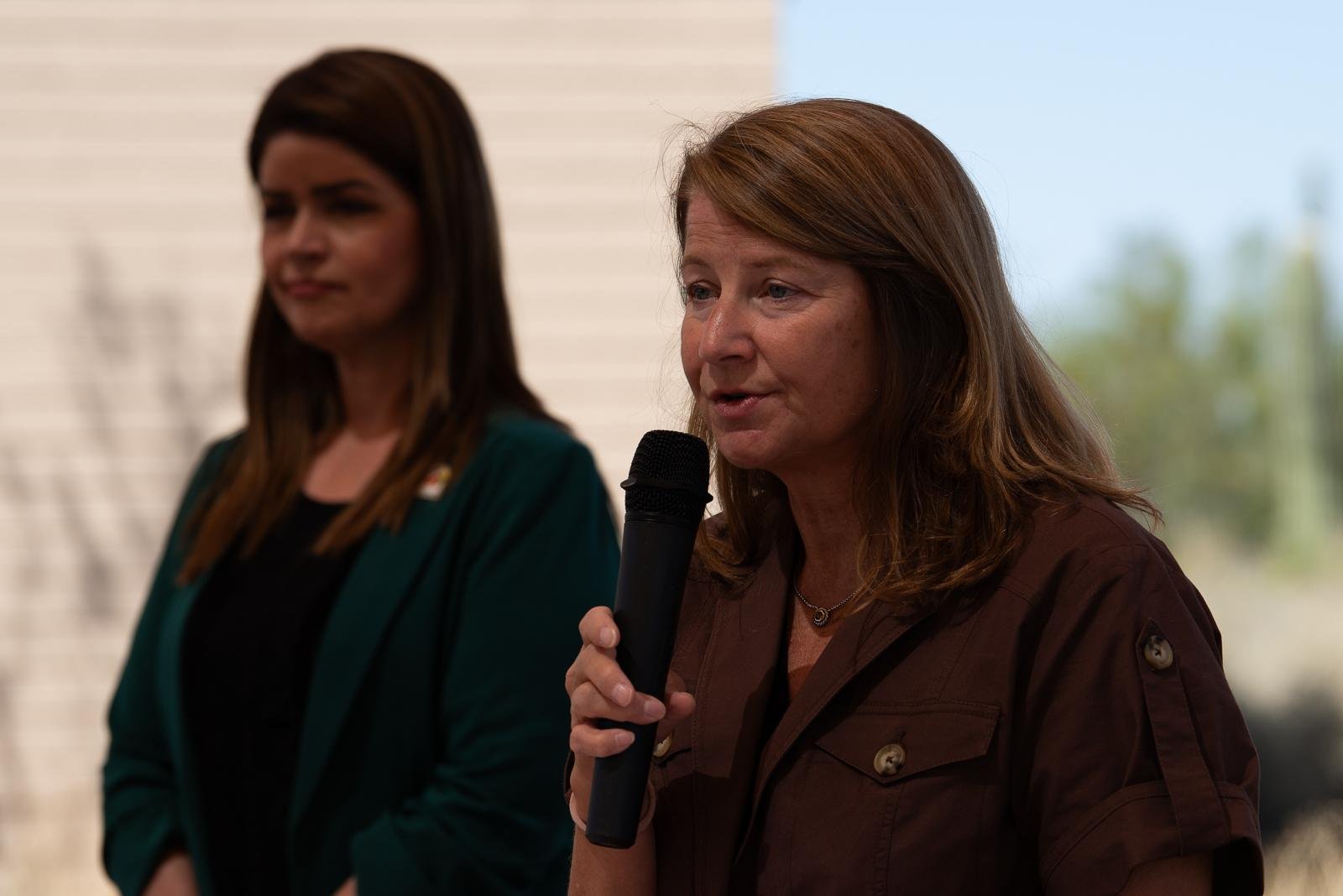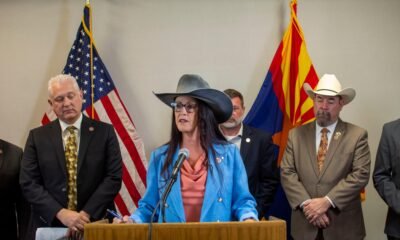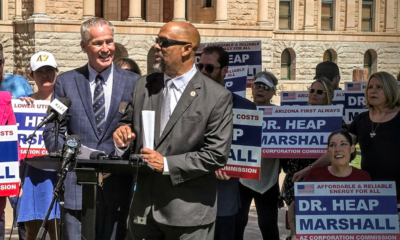border
$10 Million Boost for Arizona: Tackling Wildfires in a Scorching Future

Arizona is set to receive $10 million in federal funding aimed at wildfire mitigation, an announcement made against the backdrop of the iconic cacti at Saguaro National Park East. Acting Deputy Interior Secretary Laura Daniel-Davis, alongside Tucson Mayor Regina Romero and Arizona State Forester Thomas Torres, unveiled the funding details on Tuesday, highlighting that Arizona’s total funding from the Bipartisan Infrastructure Law has now exceeded $60 million.
This new funding will focus on critical areas such as training, mental health care, and pay raises for wildland firefighters. Part of these funds, approximately $900,000, will target invasive bufflegrass management within Saguaro National Park, a weed known for causing ecological harm and making areas more susceptible to wildfires.
“Fire season is not really a season anymore,” Daniel-Davis remarked, underscoring the ongoing risk posed by wildfires. She emphasized that invasive species like bufflegrass exacerbate the threat, leading to more frequent and severe fires across the Western U.S.
The Bipartisan Infrastructure Law, signed into law by President Joe Biden in November 2021, allocated over $1 billion for wildland fire management. Nearly $236 million of that is specifically aimed at initiatives extending through 2025. This funding aims to enhance wildfire resilience, provide superior training for firefighters, and advance wildfire science.
“The Interior Department has worked swiftly to deploy these funds to states and local communities facing the growing threat of climate change,” stated Daniel-Davis. She highlighted increasing temperatures and severe fires as significant challenges that necessitate substantial investment in wildland fire management.
Mayor Romero detailed Tucson’s climate adaptation initiatives, which include a plan to plant one million trees and utilize stormwater for irrigation. She noted that Tucson recently received a $3 million grant to improve Jacobs Park, with plans to plant 310 drought-tolerant trees and introduce green infrastructure. Additionally, Romero mentioned efforts to create a Santa Cruz River urban wildlife refuge.
Romero emphasized, “These investments have never been seen before and are crucial not only for humans but for wildlife as well.” Tucson, which boasts the largest electric bus fleet in the Southwest, aims to eliminate diesel buses by 2026, leveraging funding from the Infrastructure Law.
The federal funding for Arizona is part of a broader initiative totaling $176 million to combat extreme wildfires. Officials explained that this funding will enhance project capacity and streamline fuels management in collaboration with various partners.
Interior Department officials outlined that the projects aim to reduce excess vegetation that can fuel wildfires. Strategies involve mechanical removal, chemical treatments for invasive species, and beneficial fire methods like prescribed burns.
Furthermore, the investment includes $56 million designated for rehabilitating burned areas, $3.1 million for modernizing firefighter training, and $1.4 million for advancing wildfire science through the Joint Fire Science Program.
Torres reiterated the necessity of coordinated efforts to tackle wildfires, highlighting the complexity of Arizona’s jurisdictional landscape. “Wildfire does not respect jurisdictional boundaries,” he pointed out, calling for a collaborative approach to wildfire management.
Arizona’s fire season has evolved to a year-round challenge, according to Torres, who underscored the need for continued investment. He described the recent funding as “a down payment” toward ongoing efforts to reduce wildfire risks in Arizona and beyond.
Arizona Governor Katie Hobbs was one of 19 governors advocating for additional funding from Congress earlier this year to combat wildfires. Jeff Conn, Saguaro National Park’s science and resource management manager, highlighted the collaborative efforts with NASA to utilize satellite imagery for muffling bufflegrass spread, reinforcing the strategic approach that the new funding will support.


















